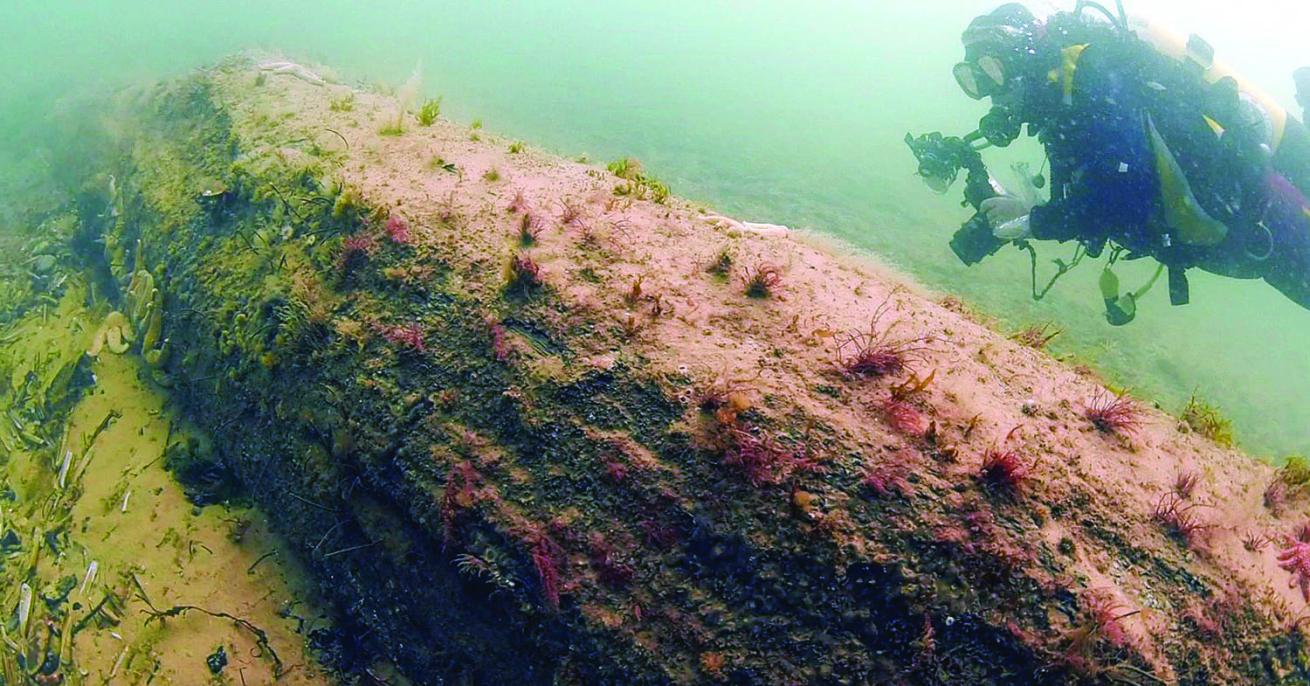Ancient Forest Discovered Underwater in the United Kingdom

Doggerland Forest
ROB SPRAY/REX USA
“At one time it would have been a full-blown Tolkien-style forest, stretching for hundreds of miles,” says Rob Spray, who, along with Dawn Watson, runs the marine survey company called Seasearch. “It would have grown and grown, and in those days, there would have been no one to fell it, so the forest would have been massive. It would have looked like a scene from The Hobbit or Lord of the Rings, which is something we don’t get in this country anymore.”
Spray is talking about Watson’s discovery while diving off the village of Cley-next-the-Sea in Norfolk, England — the underwater remains of a mighty Doggerland oak forest, most probably flattened by a tsunami more than 8,000 years ago.
Doggerland was a vast landmass that connected Great Britain to mainland Europe during and after the last Ice Age until it was flooded.
“I initially thought I was looking at a section of very old shipwreck, but soon realized it was completely solid and made of compressed peat and wood — I could snap pieces off and see the grain,” says Watson. “When I saw the first whole tree appearing out of glacial clay, I realized it was very old indeed. It was very exciting and eerie.”
The trees have transformed into a natural reef that shelters shoals of fish, a diverse variety of plants, and other marine life. It’s believed that a recent winter storm removed sediment that had covered the remains.
“We’ve so far found about three quarters of a mile of it,” says Watson. “We intend to go back out and further map the reef this summer. My main interest is the wildlife colonizing the trees; the habitat seems ideal for small colonial animals called hydroids and bryozoans and contains far more species than the nearby chalk reef. There is a chance that the winter storms may bury it again, but they may also uncover further areas — now we know where to look.”
For More Info >> Seasearch (seasearch.org.uk) is run by various charities in the UK, including the Marine Conservation Society and Wildlife Trusts. It provides training for divers to record the wildlife and habitats they see on a recreational dive. The collected data is entered into a nationwide database.

ROB SPRAY/REX USA
“At one time it would have been a full-blown Tolkien-style forest, stretching for hundreds of miles,” says Rob Spray, who, along with Dawn Watson, runs the marine survey company called Seasearch. “It would have grown and grown, and in those days, there would have been no one to fell it, so the forest would have been massive. It would have looked like a scene from The Hobbit or Lord of the Rings, which is something we don’t get in this country anymore.”
Spray is talking about Watson’s discovery while diving off the village of Cley-next-the-Sea in Norfolk, England — the underwater remains of a mighty Doggerland oak forest, most probably flattened by a tsunami more than 8,000 years ago.
Doggerland was a vast landmass that connected Great Britain to mainland Europe during and after the last Ice Age until it was flooded.
“I initially thought I was looking at a section of very old shipwreck, but soon realized it was completely solid and made of compressed peat and wood — I could snap pieces off and see the grain,” says Watson. “When I saw the first whole tree appearing out of glacial clay, I realized it was very old indeed. It was very exciting and eerie.”
The trees have transformed into a natural reef that shelters shoals of fish, a diverse variety of plants, and other marine life. It’s believed that a recent winter storm removed sediment that had covered the remains.
“We’ve so far found about three quarters of a mile of it,” says Watson. “We intend to go back out and further map the reef this summer. My main interest is the wildlife colonizing the trees; the habitat seems ideal for small colonial animals called hydroids and bryozoans and contains far more species than the nearby chalk reef. There is a chance that the winter storms may bury it again, but they may also uncover further areas — now we know where to look.”
For More Info >> Seasearch (seasearch.org.uk) is run by various charities in the UK, including the Marine Conservation Society and Wildlife Trusts. It provides training for divers to record the wildlife and habitats they see on a recreational dive. The collected data is entered into a nationwide database.










